The highlights of visiting ethnic minority villages in Ha Giang
Ha Giang is a magnet for global travelers, drawing them in with some of the most awe-inspiring mountain landscapes in Southeast Asia. However, the province offers another equally compelling attraction: its rich tapestry of ethnic minority groups. Home to around 17 distinct ethnic communities, each with its own unique culture, Ha Giang is a melting pot of diversity. These communities enchant with their vibrant traditional attire, distinctive housing styles—from stilt homes to structures made of clay, wood, or natural stone—and an array of artisanal skills, ranging from fishing and hunting to weaving and farming. Many even have their own indigenous languages.
One of the most enriching ways to delve into the lives and cultures of these ethnic minorities is by visiting their villages. Here, you’ll encounter ways of life that have remained largely unchanged for generations, as though you’ve stepped into a living time capsule. Experiencing and learning from these unique cultures is undoubtedly one of the most rewarding aspects of a visit to Ha Giang.
1. Du Gia Village (Tay)
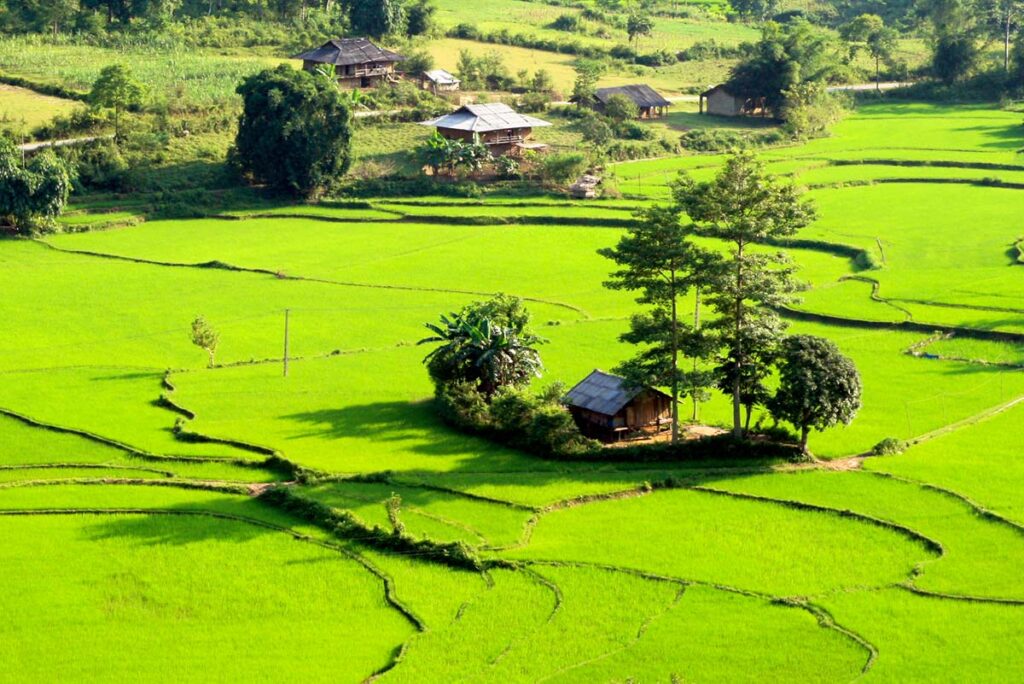
Though technically a commune encompassing several villages, Du Gia is commonly referred to as a village by locals and visitors alike. Nestled in a lush valley populated by rice fields and traditional stilt houses, the village is primarily home to the Tay ethnic group. Over the years, Du Gia has evolved from having just one homestay to multiple options, all offering charming views of the terraced rice fields. Additionally, the village has a nearby waterfall that serves as an excellent excursion.
2. Thon Tha Village (Tay)
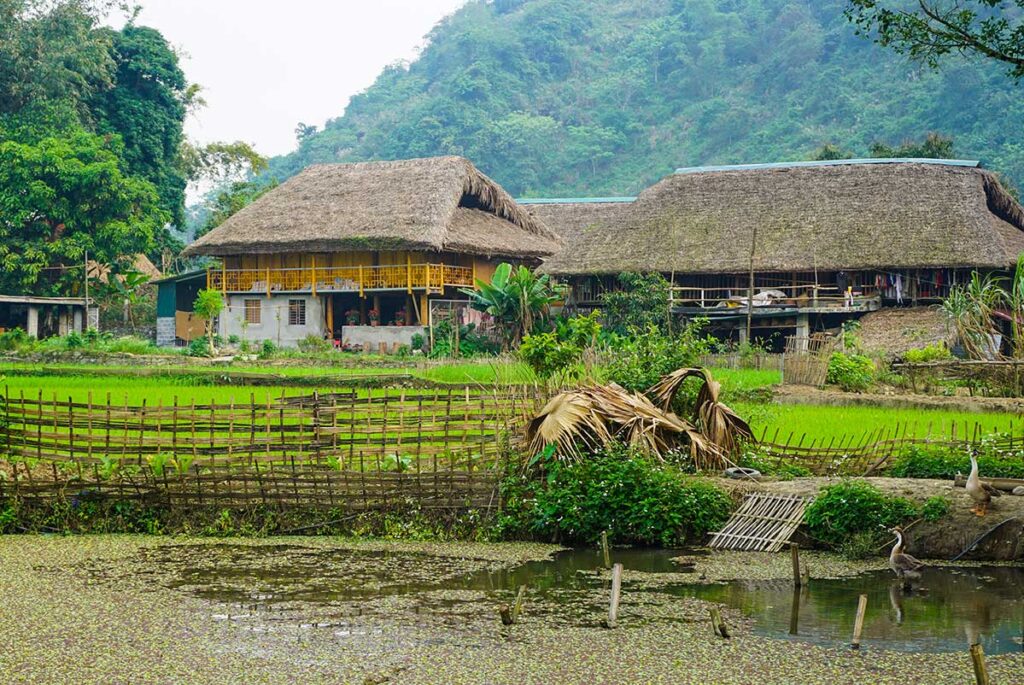
Situated just a few kilometers from Ha Giang city, Thon Tha is an ideal alternative for travelers looking for a more authentic overnight experience. This tranquil Tay village is filled with stilt houses and surrounded by rolling hills and rice paddies. Visitors can stroll to viewpoints, embark on longer hikes to local waterfalls, and experience the quietude that permeates this peaceful locale.
3. Nam Dam Village (Dao)
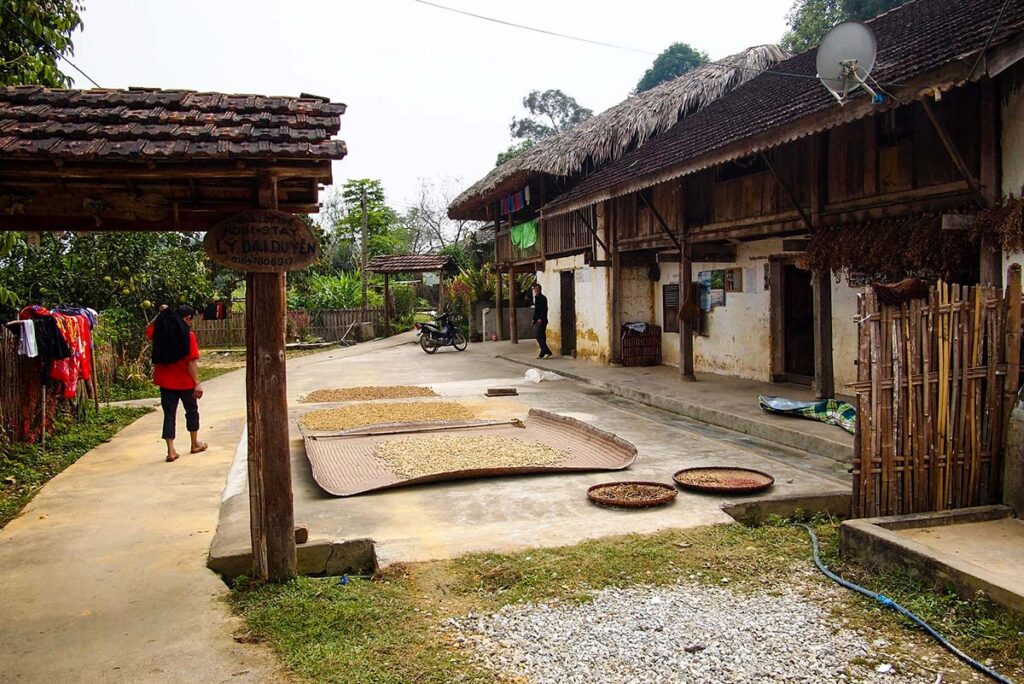
Located near the iconic Quan Ba Heaven Gate Pass and Twin Mountains, Nam Dam Village is predominantly inhabited by the Dao ethnic group. The village offers various homestay options and is renowned for its herbal baths, a must-try experience when visiting. A local waterfall provides yet another reason to explore the surrounding area.
4. Ma Le Village (Giay)
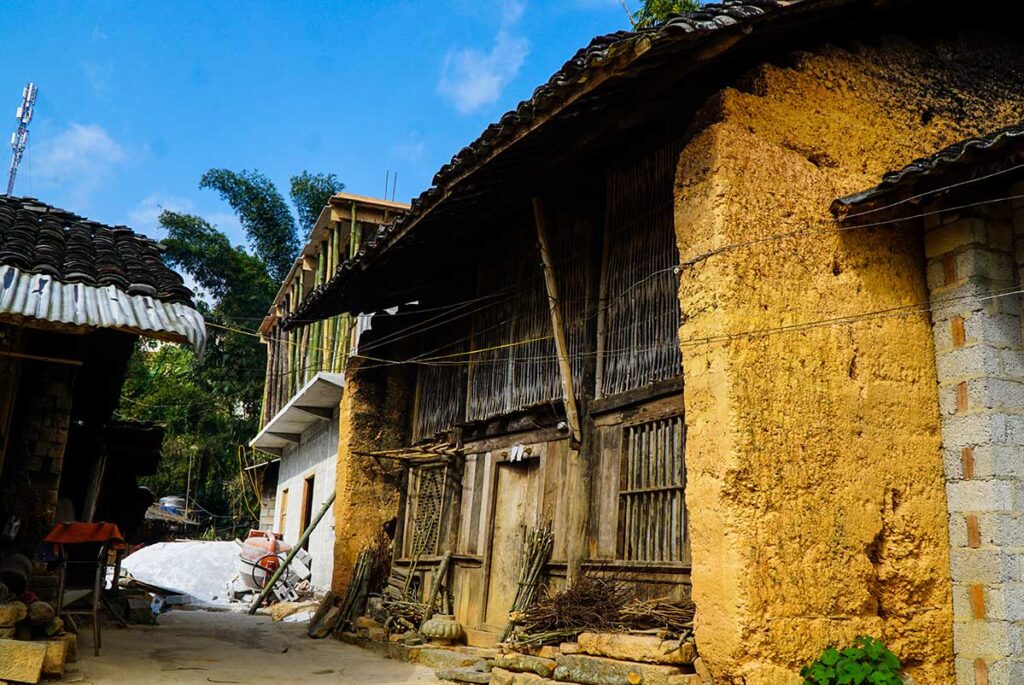
Situated along the road connecting Dong Van and Lung Cu, Ma Le captivates visitors with its traditional yellow clay houses and authentic lifestyle. With over 50 households primarily belonging to the Giay ethnic group, the village has many homes built by their inhabitants, some even exceeding 100 years in age. A homestay option allows visitors to fully immerse themselves in the local culture.
5. Lung Tam Village (Hmong)
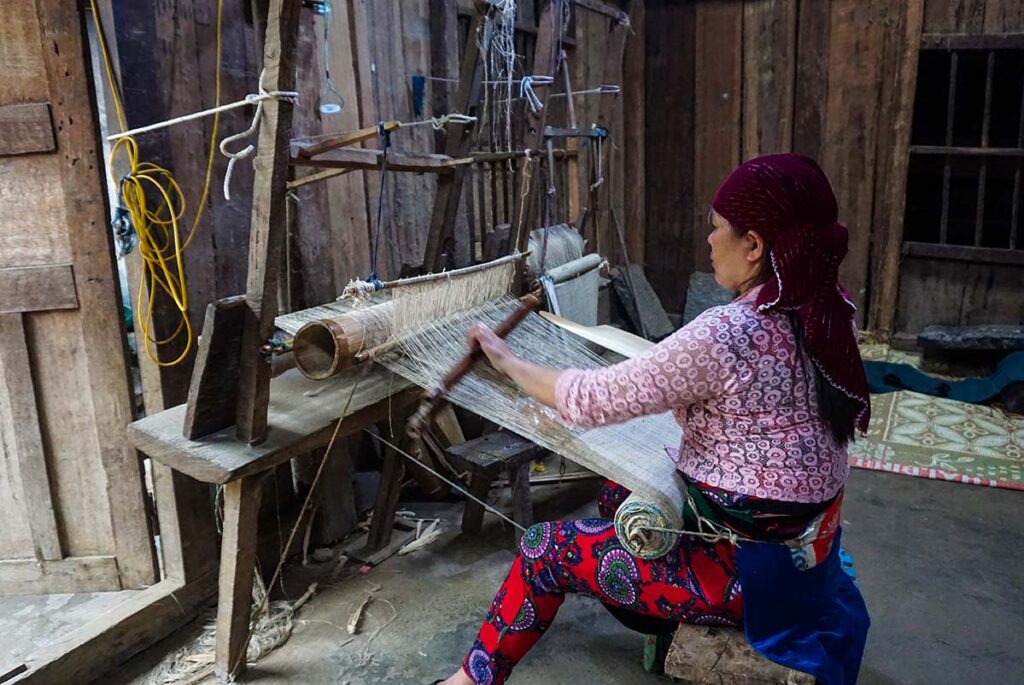
This Hmong village, situated in the Quan Ba district, is a hub for traditional brocade weaving. Lung Tam functions as a living museum, preserving the rich cultural heritage of the Hmong people. Visitors can witness the complex weaving process from flax cultivation to the finished brocade, which includes naturally-dyed vibrant colors achieved through unique techniques.
6. Lo Lo Chai Village (Lo Lo)
Just 1 km away from the Lung Cu Flagpole near the China border, Lo Lo Chai is home primarily to the Lo Lo ethnic group. The village enchants with its ancient clay houses, stone fences, and flower-filled landscapes that vary by season. A few homestays provide an authentic Lo Lo experience, offering a compelling reason to stay overnight.
7. Lung Cam Village (Hmong)
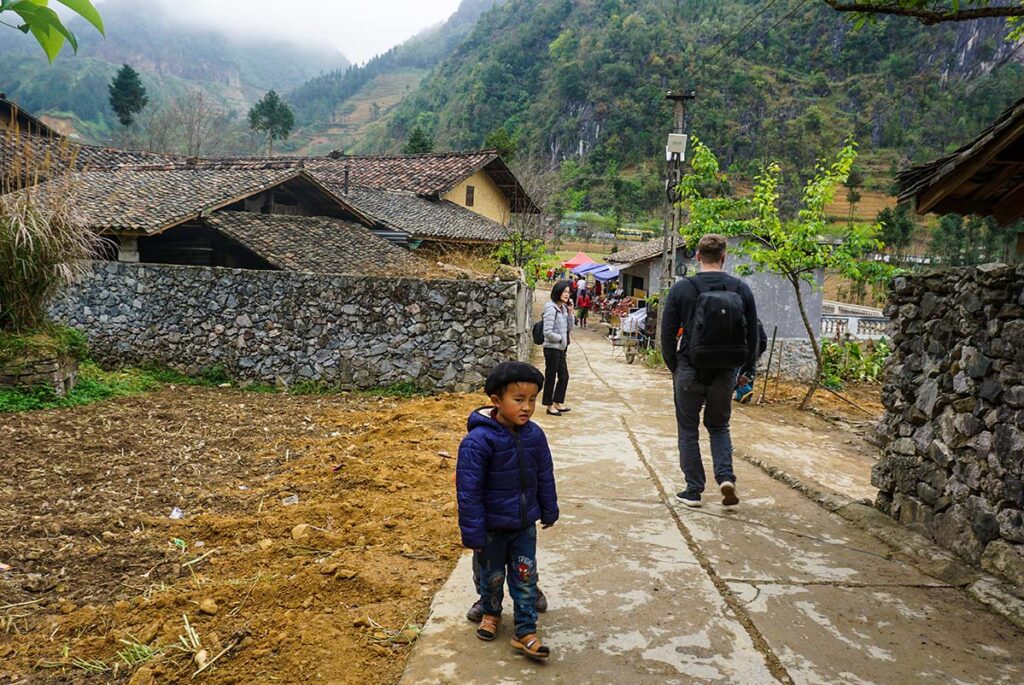
Nestled in the center of Sung La, Lung Cam is home to three ethnic groups—Mong, Lo Lo, and Han—with the majority being Mong people. Famous among Vietnamese for being a film location in the award-winning “Story of Pao,” this village offers a picturesque valley setting with time-honored architecture and old-world charm.
8. Pho Bang Village (Hmong)
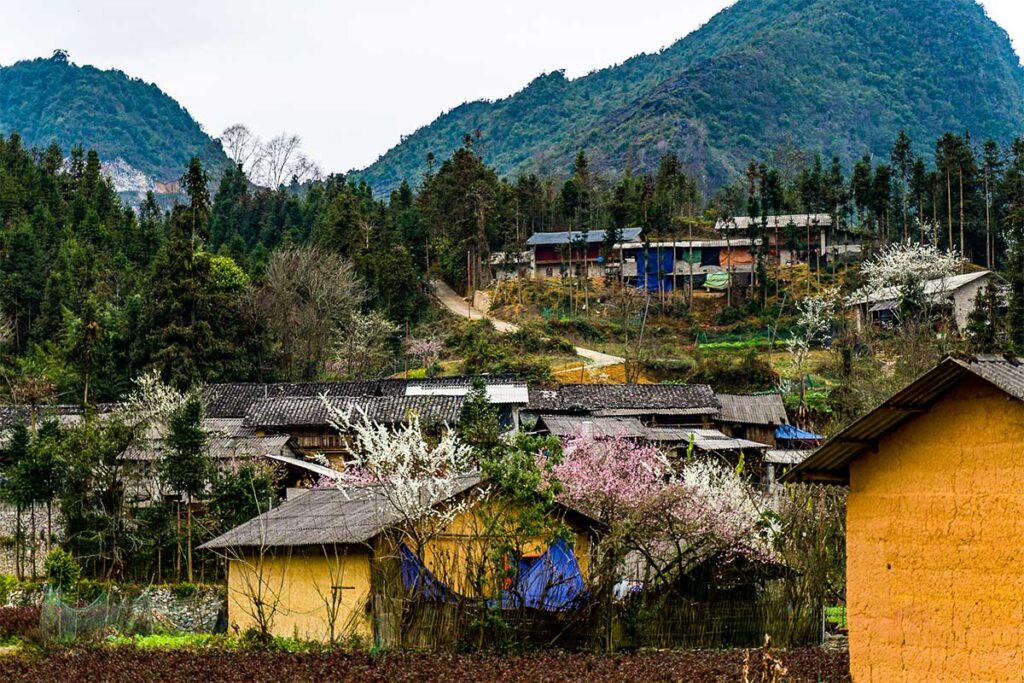
This enchanting town, located off the Ha Giang Loop, seems as if it belongs in a fairy tale. The houses, primarily inhabited by Hmong people and Chinese descendants, feature clay walls and ancient wooden doors. Though the village lacks modern amenities like restaurants and phone reception, its remote atmosphere adds to its allure.
9. Lao Xa Village (Hmong)
Tucked away amid gentle hills, Lao Xa is populated solely by Hmong people who primarily earn their living through agriculture and traditional silver casting. The best way to experience the village is to leisurely walk through its streets, observing the daily life that unfolds around you, from barefoot children playing to artisans engrossed in their craft.
10. Dong Van Old Quarter
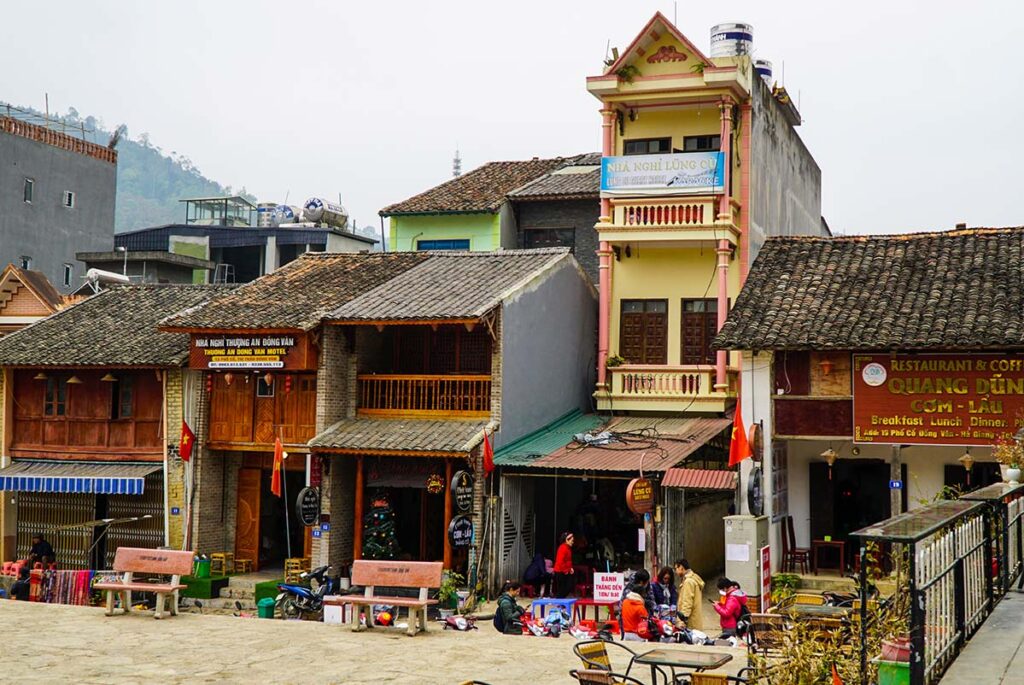
While not exactly a village, Dong Van’s Old Quarter is a vibrant and atmospheric area, especially at night. Built during the French colonial era, the old houses now serve as restaurants, guesthouses, and souvenir shops. The weekly Sunday market is one of Ha Giang’s most colorful and diverse, featuring ethnic minority clothing, and even livestock trading.
Tips for visiting villages in Ha Giang
1. Stay in an ethnic homestay
While simply visiting a local village can be a captivating experience, staying in a homestay with an ethnic family can elevate your trip to one of the most memorable experiences you’ll ever have in Vietnam. For a brief moment, you’ll become a part of their community. Join the family for dinner, observe their daily lives, learn about the tools they use, and even indulge in a traditional herbal bath.
2. Respect the local culture
The ethnic minorities of Ha Giang are deeply rooted in their traditions and can often be reserved or shy. It’s essential to approach their way of life with the utmost respect.
- Mind Your Steps: Refrain from walking through rice fields just for a photo opportunity. These fields are the community’s lifeline.
- Photography Etiquette: Always ask for permission before taking photos of people or their property.
- Dress Code: Opt for more conservative attire to respect local customs.
3. Go beyond the Ha Giang Loop
While the villages on this list are located along the popular Ha Giang Loop, don’t limit your explorations to just these destinations. If time allows, venture off the beaten path and just drive around to explore the more remote areas. You’ll be rewarded with some truly authentic experiences.
4. Visit local markets
One of the most engaging ways to interact with the ethnic communities is to visit local markets. Typically held weekly, these markets draw people from various ethnic groups in the surrounding villages. It becomes a vibrant and colorful gathering where community members socialize, trade goods, and celebrate their distinct cultures.


